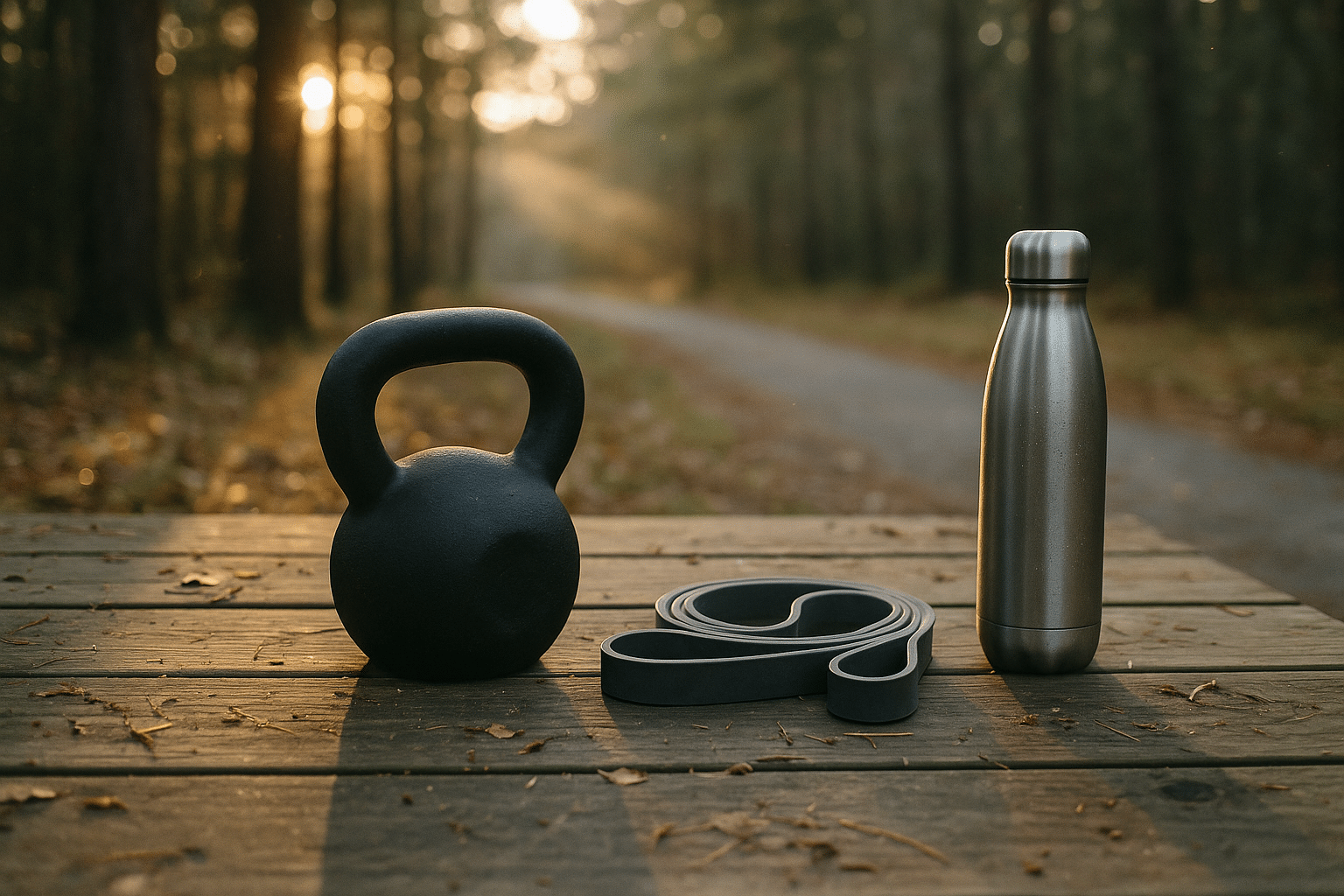
Exploring Physical Health: Trends in physical wellness and healthcare.
Outline
– Section 1: The Foundations of Physical Health in a Changing World
– Section 2: Eating for Energy and Longevity: Nutrition Patterns Shaping Outcomes
– Section 3: Movement That Matters: Strength, Cardio, Mobility, and Everyday Activity
– Section 4: Prevention and Healthcare Trends: Screenings, Telehealth, and Personalized Care
– Section 5: Conclusion and Action Plan: Building Your Personal Health Flywheel
The Foundations of Physical Health in a Changing World
Physical health is the steady engine beneath the hood of daily life. It powers concentration, mood, productivity, and resilience when life bends in unexpected directions. The fundamentals—nutritious food, regular movement, restorative sleep, and timely preventive care—have remained consistent for decades. What is new is how science and technology illuminate the details, and how social trends shape what works in real households and communities. Today’s conversations about physical wellness include personalized nutrition, home-based workouts, telehealth, and community-level approaches to chronic disease prevention. The big picture is simple: small, consistent choices accumulate into meaningful health advantages across years.
Public health guidance provides a compass. Adults are commonly advised to accumulate 150–300 minutes of moderate-intensity aerobic activity per week (or 75–150 minutes of vigorous activity), plus muscle-strengthening on two or more days. Many adults benefit from 7–9 hours of nightly sleep, along with strategies to reduce chronic stress. Routine clinical checks for blood pressure, cholesterol, glucose, and vaccinations round out a preventive toolkit. These are broad targets, but the path to reaching them can be tailored to personal preferences. Whether you enjoy brisk walks at sunrise or bodyweight circuits at home, whether your plate leans Mediterranean, plant-forward, or culturally traditional, sustainable habits are the guiding star.
Consider the shifting terrain around us: wearable sensors make activity visible, online communities add accountability, and grocery aisles offer more whole-food and plant-forward choices than ever. Yet barriers remain—time pressure, cost, limited access to safe spaces for exercise, and confusing nutrition headlines. This article explores practical strategies through that noise. It compares popular approaches (such as interval training and steady-state cardio, or intermittent fasting and conventional calorie control) and explains how to blend personal preference with credible evidence. Think of these pages as a map and toolkit, not a one-size-fits-all script.
Key ideas to keep in mind as you read:
– Progress beats perfection—aim for consistent, repeatable routines.
– Health is cumulative—small wins compound over months and years.
– Personalization matters—adapt guidelines to your context, culture, and goals.
– Prevention pays—early detection and routine care reduce future risk.
Eating for Energy and Longevity: Nutrition Patterns Shaping Outcomes
Food choices influence health through energy balance, nutrient density, and metabolic effects. A practical starting point is to build most meals around minimally processed foods: vegetables and fruits, legumes, whole grains, nuts and seeds, quality protein sources, and healthy fats. Observational and clinical research consistently associates such patterns with healthier weight trajectories and lower risk of cardiovascular disease and type 2 diabetes. While no singular macronutrient ratio suits everyone, three anchors help many people feel and perform better: adequate protein, plenty of fiber, and steady hydration.
Protein supports muscle maintenance and satiety. A general baseline for adults is around 0.8 g per kilogram of body weight per day, with higher intakes—often 1.2–1.6 g/kg—useful during periods of strength training or weight loss. Fiber intakes of roughly 25–38 g per day are commonly recommended and correlate with improved gut health, smoother blood sugar responses, and greater fullness between meals. Hydration helps regulate body temperature, cognition, and exercise performance; a simple cue is pale-yellow urine most of the day, adjusting intake with heat and activity.
Practical plate-building can simplify decisions:
– Half the plate: colorful vegetables and some fruit for fiber, micronutrients, and volume.
– A quarter: protein such as legumes, eggs, fish, poultry, tofu, or lean meats.
– A quarter: whole grains or starchy vegetables to sustain energy.
– Add a thumb of healthy fats (olive oil, avocado, nuts) for flavor and absorption.
Current trends worth understanding include intermittent fasting, low- or moderate-carbohydrate strategies, and plant-forward dietary patterns. Intermittent fasting can improve calorie awareness and meal rhythm for some, but its benefits generally stem from sustained calorie control and food quality rather than the feeding window alone. Lower-carbohydrate approaches may support appetite control and glycemic management, especially when they emphasize non-starchy vegetables, proteins, and healthy fats instead of processed foods. Plant-forward patterns often increase fiber and phytonutrients, supporting heart health and microbial diversity in the gut.
Another rising theme is the focus on ultra-processed foods. Research links high intake of ultra-processed items to excess calorie consumption and weight gain, but context matters: an occasional convenience food is manageable in an otherwise nutrient-dense pattern. A flexible approach—batch-cooking grains and proteins, keeping frozen vegetables handy, seasoning generously, and leaning on cultural staples—turns intention into a routine you can sustain.
Finally, pay attention to your own data. Energy levels, digestion, mood, training performance, and hunger signals are meaningful feedback loops. A simple food and symptoms journal for two weeks often reveals patterns you can adjust without complicated rules.
Movement That Matters: Strength, Cardio, Mobility, and Everyday Activity
Exercise operates like compound interest for the body. Strength training preserves lean mass, which supports metabolic health and independence with age. Cardio training nourishes the heart, lungs, and vascular system. Mobility and balance practices improve movement quality and reduce injury risk. Together, they form a comprehensive plan that scales to your schedule and environment.
Guideline snapshots often recommend:
– Aerobic work: 150–300 minutes per week at moderate intensity (e.g., brisk walking) or 75–150 minutes vigorous (e.g., running), or a mix.
– Muscle-strengthening: at least two days weekly, covering major muscle groups with multiple sets.
– Movement snacks: frequent short breaks from sitting to nudge daily energy expenditure upward.
Comparing approaches can help you choose what fits. High-Intensity Interval Training alternates hard efforts with recovery and is time-efficient; steady-state cardio offers meditative consistency and is easier to recover from day to day. Strength training can be built with free weights, resistance bands, or bodyweight alone; progression—adding load, repetitions, or complexity—drives results more than equipment type. Mobility work, from simple dynamic warm-ups to dedicated stretching sessions, supports joint range of motion and technique quality during lifts and cardio.
Don’t overlook NEAT—non-exercise activity thermogenesis—which includes walking to do errands, taking the stairs, gardening, or playing with kids. It can account for a surprisingly large share of daily calorie burn and helps break up sedentary time linked with cardiometabolic risk. A practical formula layers activity types: two to three strength sessions per week, one to three cardio sessions that vary intensity, and daily walking. If time is tight, 10-minute bouts add up: a quick morning walk, a lunchtime mobility circuit, and an evening set of bodyweight movements creates momentum.
Technology trends provide useful accountability. Many people use wearable devices and simple step goals to prompt more movement and track sleep and heart-rate patterns. Treat these data as coaching cues, not judgments. A plateau might signal that you need more recovery or a change in stimulus rather than more willpower. Progress markers could include resting heart rate, the number of push-ups or squats completed, walking pace, or how your joints feel during everyday tasks.
Recovery is integral, not optional. Sleep and downshift days allow tissues to adapt, hormones to recalibrate, and motivation to stay steady. If soreness lingers, reduce intensity or volume temporarily. Sustainable training respects the balance between stress and repair.
Prevention and Healthcare Trends: Screenings, Telehealth, and Personalized Care
Preventive healthcare translates everyday habits into long-term protection. Routine measurements—blood pressure, lipid profiles, fasting glucose or A1c, and body composition—offer early signals to adjust course. Vaccinations, tailored to age and risk, help reduce infectious disease complications. Cancer screening schedules vary by age and family history, but common examples include colorectal, breast, cervical, and, for some, prostate screening; your clinician can personalize timing and modality. The goal is not to collect numbers for their own sake, but to make informed decisions with clear baselines.
Healthcare delivery is also evolving. Virtual visits expand access for follow-ups, basic consultations, mental health check-ins, and chronic condition management. Remote monitoring tools (e.g., home blood pressure cuffs or glucometers connected to apps) provide trend data to clinicians and patients, facilitating earlier, less invasive interventions. Community health programs—walking groups, nutrition education at local centers, workplace wellness challenges—reduce barriers by bringing resources closer to where people live and work. These efforts are especially meaningful in areas with limited transportation or clinic capacity.
Personalized care is another rising trend. While genetics-based recommendations are still maturing, practical personalization already happens via lifestyle and biomarker feedback. For example, if morning walking lowers your blood pressure more than evening sessions, or if a higher-protein breakfast stabilizes mid-morning hunger, those insights refine your routine. Likewise, medication decisions and targets for blood pressure or cholesterol are often individualized based on overall risk profiles rather than a single cutoff.
Practical prevention checklist to discuss with your clinician:
– Blood pressure: regular measurements; home monitoring can reveal white-coat effects and daily patterns.
– Lipids: periodic panels to track LDL, HDL, and triglycerides, adjusting diet and activity accordingly.
– Glucose: fasting glucose or A1c for metabolic risk, especially with family history or elevated waist circumference.
– Vaccinations: keep routine shots up to date based on age and exposure risks.
– Screening tests: tailor schedules for colorectal, breast, cervical, and other cancers to personal risk.
Ensuring equity remains vital. Access to safe spaces for activity, affordable nutrient-dense foods, and reliable broadband for telehealth varies widely. Community partnerships, policy initiatives, and employer support can help close gaps. On an individual level, planning ahead—bulk-cooking, walking with neighbors for safety, using public parks, or leveraging telehealth for travel savings—turns structural challenges into manageable workarounds.
Conclusion and Action Plan: Building Your Personal Health Flywheel
Physical health improves when actions reinforce one another: nourishing meals support training, training improves sleep, sleep strengthens willpower, and preventive care confirms progress. This flywheel effect builds momentum that carries you through busy seasons. The path is not about chasing perfection; it is about designing routines you can repeat under real-life constraints and refining them with feedback.
Turn insights into practice with a simple framework:
– Choose a focus: nutrition, movement, sleep, or prevention. Start with the area that feels most achievable.
– Set one clear, measurable target for 2–4 weeks. Example: walk 30 minutes after dinner on weekdays, or add vegetables to lunch and dinner.
– Track only what matters. Keep a short log of steps, workouts, or meals, plus energy and sleep quality.
– Review and adjust. If adherence is below 80% after two weeks, simplify the target or remove obstacles.
Sample 4-week starter plan:
– Week 1: Walk 20–30 minutes on five days; place a water bottle on your desk; add fruit to breakfast.
– Week 2: Two short strength sessions (e.g., squats, pushes, rows, hinges), 20 minutes each; carry forward Week 1 habits.
– Week 3: Add a mobility routine on two days; prepare two batch-cooked meals (a grain and a protein) for quick dinners.
– Week 4: Schedule one preventive step—book a checkup, confirm vaccinations, or measure blood pressure at home.
As momentum builds, expand selectively: increase strength training volume, experiment with cardio variety, or fine-tune nutrition by boosting fiber and protein. Use wearable data or a simple journal to validate what’s working. If stress spikes or sleep dips, scale back training intensity for a week and prioritize recovery. This responsiveness, rather than rigid intensity, keeps progress rolling without burnout.
For readers navigating busy jobs, family responsibilities, or limited access to facilities, the key is to design friction-light habits: home-based workouts, minimal-prep meals, walking meetings, and telehealth check-ins. The most reliable plan is the one you can execute on your most crowded Tuesday. Start small, stay curious, and let consistent, thoughtful choices accumulate into strength, stamina, and peace of mind that you can feel—at work, at home, and everywhere in between.

